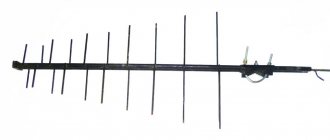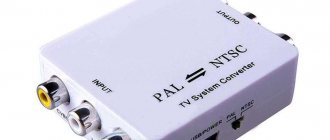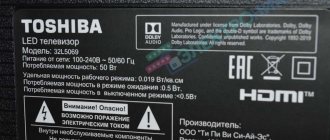To ensure video signal transmission in digital format, DVI is used. The interface was developed during the period when DVDs began to be produced. At that time, there was a need to transfer video from a PC to a monitor.
The methods of transmitting analogue broadcasting known at that time were not conducive to transmitting high-quality images to the monitor. Since it is physically impossible to physically carry out such a high-resolution transmission at a distance.
Distortion can form in the channel at any time, this can be especially observed at higher frequencies. HD is precisely the owner of high frequencies. To avoid this kind of interference and distortion, manufacturers of modern technology have set a goal to abandon the analogue broadcast option and switch to a digital type of signal in the process of processing and transmitting video to the monitor.
In the 90s, manufacturers joined forces, as a result of which DVI technology appeared.
The DVI connector is considered one of the most popular methods for connecting monitors and projects. The presence of a DVI interface on a device does not guarantee that the user will be able to realize all the capabilities available in this port. In this article we will look at DVI I and DVI D, the differences and similarities between these ports.
DVI-I interface
This interface is considered the most used in video cards. “I” speaks of unification from the translation “integrated”. The port uses 2 channels for data transmission - analog and digital. Functioning separately, they have various modifications of DVI-I:
- Single Link . This device includes independent digital and analog channels. The type of connection on the video adapter and how the connection occurs determines which one will function.
This type of interface is not used by professionals because it does not transmit to 30″ and LCD monitors.
- Dual Link is a modernized port that features: 2 digital and 1 analog channel. The channels operate independently of each other.
The difference is that most video cards have at least 2 DVI-I connectors.
FAQ : Monitor / Video : LCD monitor (LCD, TFT)
Q: What is an LCD monitor (LCD, TFT)? A: Liquid crystal display (also Liquid crystal display, LCD, LCD monitor, English liquid crystal display, LCD, flat panel indicator) is a flat monitor based on liquid crystals.
LCD TFT (English TFT - thin film transistor - thin-film transistor) is one of the names of a liquid crystal display that uses an active matrix controlled by thin-film transistors. A TFT amplifier is applied for each sub-pixel to improve the performance, contrast and clarity of the display.
Based on materials from wikipedia.org.
Q: How does an LCD monitor work? A: Each pixel of an LCD display consists of a layer of molecules between two transparent electrodes, and two polarizing filters, the planes of polarization of which are (usually) perpendicular. In the absence of liquid crystals, the light transmitted by the first filter is almost completely blocked by the second.
The surface of the electrodes in contact with the liquid crystals is specially treated to initially orient the molecules in one direction. In a TN matrix, these directions are mutually perpendicular, so the molecules, in the absence of tension, line up in a helical structure. This structure refracts light in such a way that the plane of its polarization rotates before the second filter, and light passes through it without loss. Apart from the absorption of half of the unpolarized light by the first filter, the cell can be considered transparent. If voltage is applied to the electrodes, the molecules tend to line up in the direction of the field, which distorts the screw structure. In this case, elastic forces counteract this, and when the voltage is turned off, the molecules return to their original position. With a sufficient field strength, almost all molecules become parallel, which leads to an opaque structure. By varying the voltage, you can control the degree of transparency. If a constant voltage is applied for a long time, the liquid crystal structure may degrade due to ion migration. To solve this problem, alternating current is used, or the polarity of the field is changed each time the cell is addressed (the opacity of the structure does not depend on the polarity of the field). In the entire matrix, it is possible to control each of the cells individually, but as their number increases, this becomes difficult to achieve, as the number of required electrodes increases. Therefore, row and column addressing is used almost everywhere. The light passing through the cells can be natural - reflected from the substrate (in LCD displays without backlight). But more often an artificial light source is used; in addition to independence from external lighting, this also stabilizes the properties of the resulting image. Thus, a full-fledged LCD monitor consists of electronics that processes the input video signal, an LCD matrix, a backlight module, a power supply and a housing. It is the combination of these components that determines the properties of the monitor as a whole, although some characteristics are more important than others.
DVI-D interface
This port looks different from the first DVI-I. The interface can accept a couple of channels. The first Single Link type contains only 1 channel, and it is not enough to connect to 3D monitors.
Dual Link is the second type. There are no analog channels, but the interface has wide options for transmitting information. Dual - indicates two channels, which makes it possible to send images to the monitor in three-dimensional format, since 2 channels have 120 Hz and are capable of transmitting high resolution.
Specification [edit | edit code]
Digital transmission [ edit | edit code]
- Minimum clock frequency: 21.96 MHz
- Maximum clock frequency in single mode: 165 MHz
- Maximum clock frequency in dual mode: depends on TMDS transmitter and cable thickness and length
- Pixels transmitted per clock cycle: 1 (single mode) or 2 (double)
- Bits per pixel: 24 (single mode) or 25-48 (double, if 1 pixel is transmitted per clock cycle)
- Examples of single link modes:
- HDTV (1920x1080), 60 Hz with 5% of bandwidth used for blanking (131 MHz)
- WUXGA (1920×1200), frequency 60 Hz (154 MHz)
- UXGA (1600×1200), frequency 60 Hz with damping according to the GTF (Generalized Timing Formula) standard (161 MHz)
- SXGA (1280x1024), 85 Hz with GTF damping (159 MHz)
- Examples of dual link modes:
- QXGA (2048×1536), 75 Hz with GTF attenuation (2×170 MHz)
- HDTV (1920x1080), 85 Hz with GTF blanking (2x126 MHz)
- WQXGA (2560×1600), frequency 60 Hz
- WUXGA (1920×1200), frequency 120 Hz (2×154 MHz)
- The RGB signal bandwidth of the DAC of a modern video card is 400 MHz. However, video cards based on XGI Volari XP10 operate at 420 MHz, and the highest DAC frequency was achieved on the BarcoMed 5MP2 Aura 76Hz video card and is 550 MHz [6] [ significance of the fact?
] .
Analogue transmission [ edit | edit code]
Connector [edit | edit code]
Numbering of contacts, view of the socket
| 1 | 2 | 3 | 4 | 5 | 6 | 7 | 8 | C1 | C2 |
| 9 | 10 | 11 | 12 | 13 | 14 | 15 | 16 | C5 | |
| 17 | 18 | 19 | 20 | 21 | 22 | 23 | 24 | C3 | C4 |
The main differences between DVI-I and DVI-D
Most modern video card models are available with a DVI interface instead of the classic, but outdated VGA. Of course, you shouldn't forget about HDMI. From what was said earlier, it is clear that DVI is available in two types. What's the difference between DVI-I and DVI-D?
The differences boil down to the following: I can transmit both analog and digital signals, while D can only transmit digital signals. Thus, DVI-D is not suitable for connecting an analog monitor.
DVI is a digital video connector that replaced VGA. DVI-I is responsible for transmitting digital and analog signals. As for the analog signal, it is required for compatibility of older monitors with the beam tube. Time passed, and this option was no longer required; video cards began to use exclusively digital signals. As a result, DVI-D took over these tasks.
You need to understand that inserting a DVI-I adapter or the same type of cable into DVI-D will not work. Because the connector connectors are different. The DVI-D interface can be connected to “i” without any problems. This option allows you to receive an exclusively digital signal. Analog signals are not read in this situation, since the DVI-D connector does not have an “i” pin, which is responsible for transmitting an analog signal.
Software connection settings
In the TV settings, a special menu item is responsible for setting the incoming content stream. The remote control contains a button called SOURCE (i.e. translated from English as “source”) or INPUT (respectively “input”). The exact name of the button is determined by the specific TV manufacturer and display device model.
After pressing the SOURCE/INPUT button, a list will appear on the screen from which we need to mark the HDMI/DVI inscription. Then, using the remote control, go to the advanced settings of the TV and select DVI PC. This will be the signal
, which must be enabled before connecting.
The final setup step is to confirm the changes with OK
or Enter.
What do they have in common?
The differences between DVI-I and DVI-D have been examined, and we can begin to consider their combined characteristics.
DVI-I is universal and has the option of transmitting two types of signals: digital and analog. Due to the use of special additional elements in the form of adapters, and connection with other devices, “I” is capable of efficiently transmitting different formats. The use of this type for an analog signal has practically no striking distinctive features from “D”.
The optimal solution for a digital monitor is to use the DVI-D interface, and for an analog monitor – the universal “I” interface.
Development of standards
However, this connector is practically never found in modern video cards (produced after approximately 2013). This is due to quite a large number of shortcomings. Among them:
- Increased sensitivity to external electromagnetic fields, which can become a source of interference and noise;
- Noticeable signal loss with long cable lengths (from 2 meters);
- Poor compatibility with non-standard format screens (such as 32:9);
- Inability (even in DL) to work at 4K resolution.
Because of all these shortcomings, they began to gradually abandon it. Moreover, HDMI 2.0 was introduced in 2013, which brought support for impressively high resolutions. And then DisplayPort came out, which has even greater bandwidth and therefore in iteration 1.4 even supports 8K monitors - and can work over a USB Type-C connector, which is generally surprising.
New video transmission standards have proven to be more scalable and productive than DVI. And that is why they began to abandon it. At the time of writing this material (April 2021), these connectors are extremely rare, and DVI-I is generally only found in “museum” video cards.
Therefore, when assembling a new computer, you should not chase the cheapness and the mandatory presence of a DVI connector. Currently, there are many more productive standards.
Story
HDMI is, as you understand, an abbreviation. It stands for High Definition Multimedia Interface or High Definition Multimedia Interface.
They first started talking about him in 2002. And the developers were several more than well-known companies, one might even say giants in the world of technology, and specifically:
- Panasonic;
- Philips;
- Hitachi;
- Matsushita Electric Industrial;
- Thomson (RCA);
- Silicon Image;
- Sony;
- Toshiba.
Interestingly, today the technology is under the control of only one of these organizations - Silicon Image, or more precisely, its division called HDMI Licensing.
Therefore, everyone who uses HDMI ports in their equipment must pay a “tribute” to Silicon Image. Its size is $0.04 per unit.
Today this company produces practically nothing, but lives off of projects like these that were created many years ago and generate passive income.
Clever!
As for DisplayPort, things are even more interesting. The technology was developed by VESA, also known as Video Electronics Standards Association. This company includes a huge number of other giants in the tech world, such as AMD and Intel.
VESA's mission is to develop new standards for a wide variety of technical fields.
Here are just the company's most famous products:
- Flat Display Mounting Interface (FDMI) – mounts for TVs and monitors;
- SVGA – resolution 800x600;
- VESA BIOS Extensions (VBE) – a BIOS plugin for advanced work with color depth and resolution.
You've probably worked with some of this.
So, the standard we are considering was introduced in 2006. Its main goal was to eliminate such giants as VGA and DVI from the market (these are other types of cables that also connect computers to monitors and TVs).
It is noteworthy that if you want to use DisplayPort in your equipment, you will also have to give a portion of the revenue to VESA, as is the case with HDMI.
But here the amount of deductions is 0.2 dollars per unit.
Hence the first plus for HDMI - it has a smaller so-called royalty, that is, a “tribute” to the company that controls the specification. This means that even start-up companies with a small budget that produce equipment can use it completely free of charge.
Perhaps this is why HDMI is more popular than its competitor. It is also interesting that many sites write about the absence of royalties for DisplayPort.
But this is a lie. If you decide to make your computer or other equipment with such a connector and put it up for sale, VESA will sue you!











